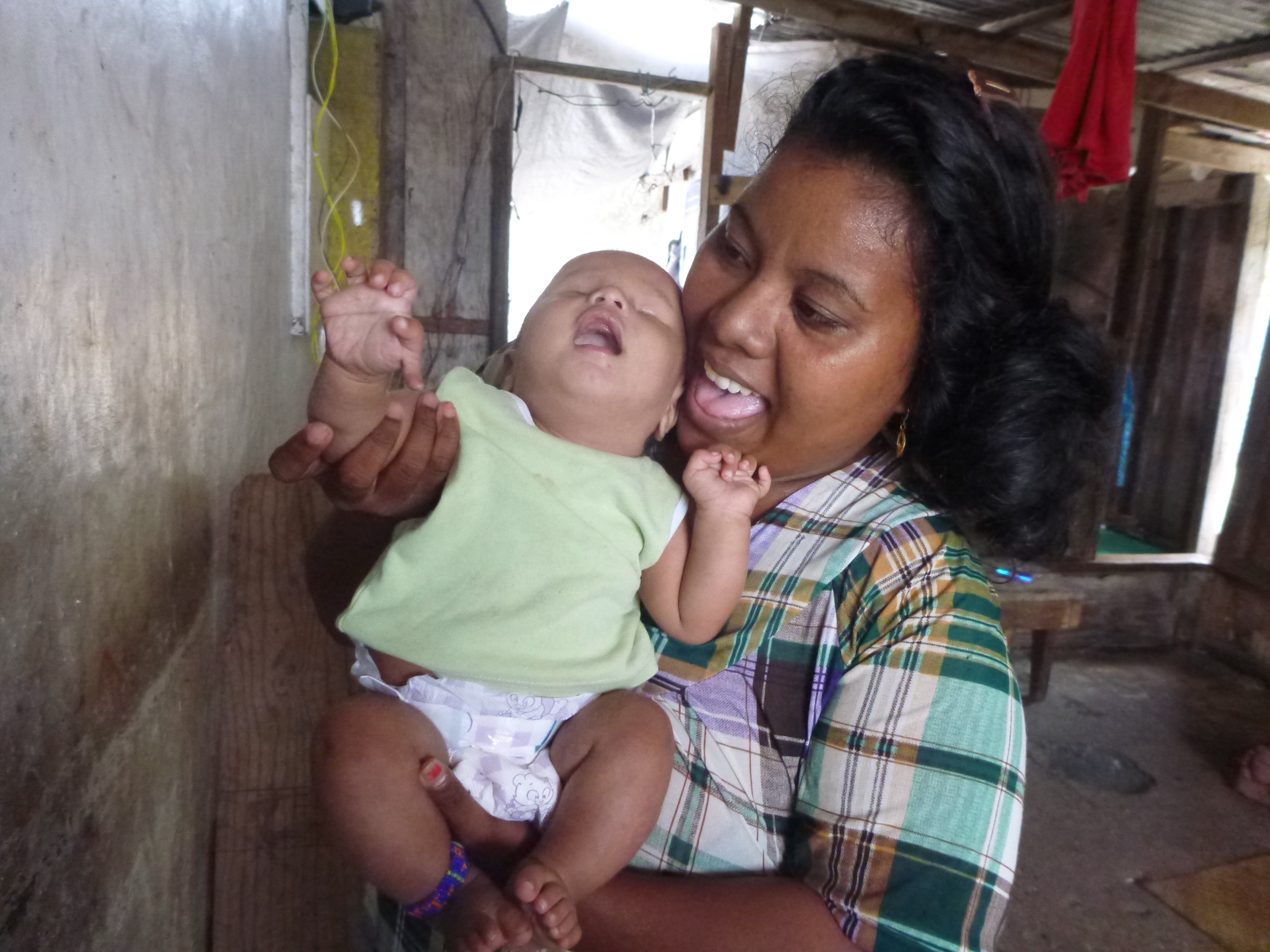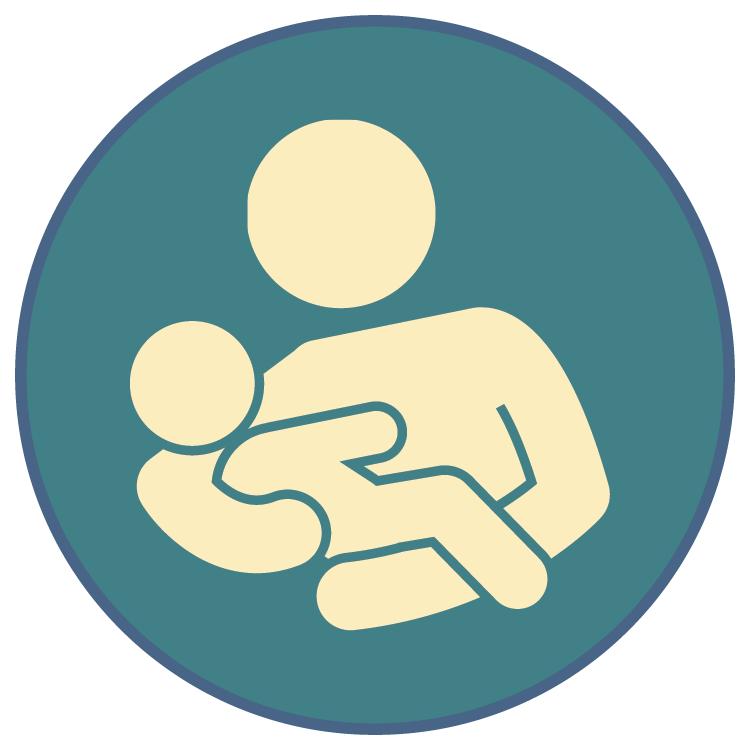Lesson 1 - Foundations of Early Intervention
In this lesson, we focus on early intervention for children who are deafblind and their families, including how deafblindness impacts a child’s learning, communication, and bonding with caregivers. You’ll learn key strategies you can use right away to build a positive relationship with a family and support their confidence in caring for their child.
For more information, visit the National Center on Deafblindness at nationaldb.org.

Learning Objectives
Lesson 1 has three learning objectives. After completing the lesson, participants should be able to
- Describe how deafblindness affects an infant or toddler’s ability to access information and how this impacts your role as an early intervention provider
- Recognize the importance of teamwork to support learning, development, and assessment
- Apply strategies to increase caregiver understanding of deafblindness and their confidence in caring for their child
In Part 1, you’ll learn about the wide diversity of the deafblind population as well as how deafblindness impacts an infant or toddler’s ability to access information and learn about the world around them. This section also explores how deafblindness can affect bonding and attachment.
Activities
Instructors: The following activities can be adapted for a variety of purposes. For example, have participants turn in written or posted responses, or use the topics and questions as discussion starters. Some can also be used for group activities.
Option 1
Review the causes of deafblindness listed in the "Etiology" section of the most current National Deaf-Blind Child Count Report.
- Research one condition from the list that sounds interesting to you (some can be found on this Causes of Deaf-Blindness page).
- Describe the condition, whether the signs and symptoms are present before age 3, and how it is diagnosed.
- Find the number of children in your state who have been identified as having the condition on the National Deaf-Blind Child Count Report.
Option 2
Watch this video of a young child who is deafblind as she explores an unfamiliar object. As an early intervention provider, you’ll want to discuss with the caregiver how the child is using their senses to learn about the object. What might you tell them about what you’ve observed?
Option 3
What may be different for an infant who is deafblind and spends the first few weeks of life in a neonatal intensive care unit, as compared with a hearing-sighted infant who comes home shortly after birth? How will things change when a child who is deaf-blind comes home? What impact will this have on the family?
Part 2 - Teamwork and Assessment
Part 2 focuses on the importance of building a relationship between you as the early intervention provider and the family. You’ll also learn about the EI team and how a child who is deafblind is assessed.
Activities
Instructors: The following activities can be adapted for a variety of purposes. For example, have participants turn in written or posted responses, or use the topics and questions as discussion starters. Some can be used for group activities.
Option 1
What are the benefits of collaboration with multiple specialists when working with an infant or toddler who is deafblind? And what impact do you think multiple specialists might initially have on caregivers?
Option 2
How is assessment of an infant or toddler who is deafblind different from one with typical hearing and vision?
Option 3
Imagine a toddler who is deafblind has been added to your caseload. What might you ask the family during the initial caregiver interview?
Option 4
Explore one of the following assessment tools online. Describe how it is used to assess a child who is deafblind.
Option 5
This option requires access to an infant or toddler who is deafblind. Select one of the tools listed below and complete all or part of the tool along with the caregiver. What did you learn about the child as a result of using the tool?
Part 3 - Increasing Caregiver Understanding and Confidence
In Part 3, you’ll learn important strategies you can put to use right away to improve a family’s understanding of deafblindness as well as their confidence in caring for their child.
Activities
Instructors: The following activities can be adapted for a variety of purposes. For example, have participants turn in written or posted responses, or use the topics and questions as discussion starters. Some can be used for group activities.
Option 1
Why might caregivers experience stress and a sense of isolation in their first years with an infant or toddler who is deafblind? And why is it critical that early intervention providers give them time to share their feelings?
Option 2
Imagine you are visiting the family of a toddler who is deafblind. You’ve been working with them for several months. Today, you are planning to talk to the parents about how to support their child’s mobility. However, when you arrive, the mother tells you she’s worried her child won’t ever be able to read. How will this impact your plans for that day’s visit and how will you respond to the mother?
Option 3
Suppose you are on a home visit with a child who is deafblind. On this day, a grandparent is visiting whom you’ve not met before. After introductions, you and the parent begin quietly watching the child play. The grandparent seems confused by this, and wonders aloud why you’re not doing anything if you’re supposed to be providing early intervention services to support the child’s learning? How might you respond?
Quiz
Instructors are welcome to use this quiz as-is or adapt it to meet their needs. It can be used to test participants’ knowledge following completion of the module or for pre- and post-test evaluation. To obtain answers to the quiz, instructors should contact support@nationaldb.org.
Assessment Tools
The Communication Matrix helps you identify and understand a child’s ways of communicating long before they use spoken or signed words. This is useful for showing communication progress, even when it follows a different course and pace than for typically developing children.
This Likes and Dislikes webpage from the Washington DeafBlind Program provides a process and form you can use to learn about a child’s preferences.
The Home Inventory of Problem-Solving Skills is designed to assess the early cognitive development of children who have severe or multiple disabilities—and are not able to speak—by determining how well they understand the physical environment and solve problems that arise within it. It can be ordered from Design to Learn.
HomeTalk is especially useful in the six months prior to a child’s third birthday. It helps a family think about and record information needed for introducing their child to a new school team. HomeTalk also assesses a child’s strengths in several developmental domains, and connects their areas of need to IEP goals. Also available in Spanish.
Additional Resources
Deaf-Blindness Overview
General information about deafblindness including causes, vision and hearing characteristics, and profiles of children who are deafblind
Impact of Deaf-Blindness on Learning
Resources that describe the way children who are deafblind learn and how this differs from those with typical vision and hearing
National Child Count
The National Child Count of Children and Youth who are Deaf-Blind provides extensive information on the population of children identified with deaf-blindness in the U.S, aged birth through 21
The Rare Life
A podcast produced by the mother of a child who is deafblind about parenting children with rare medical conditions
